Bokashi composting is a game-changer for eco-conscious individuals. It’s an innovative way to turn kitchen waste into a nutrient-rich soil enhancer. Unlike traditional composting methods, it’s quick, efficient, and can handle almost all types of waste, including dairy and meat.
This method stands out because of its simplicity and the minimal space required. It makes Bokashi composting perfect for urban dwellers or anyone aiming to reduce their ecological footprint. Plus, it’s done without the long wait or unpleasant odors often associated with composting.
Setting Up Your Bokashi Bin
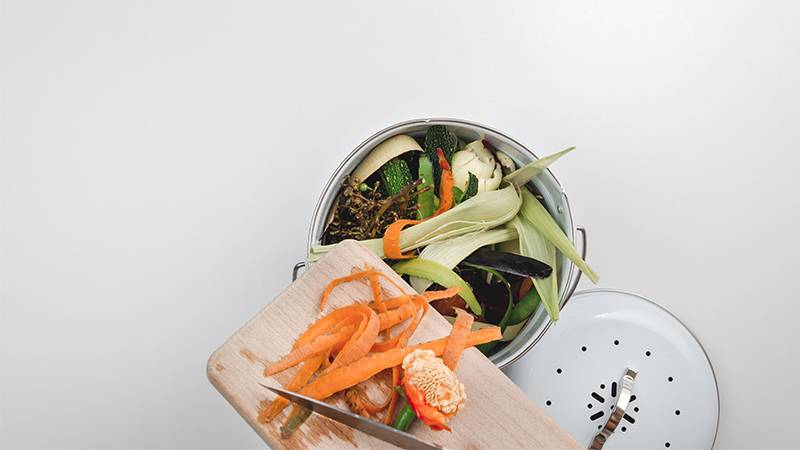
Setting up your Bokashi bin is the first step toward transforming your kitchen scraps into a garden treasure. The right Bokashi bin is crucial for a successful composting journey. Look for a bin that fits comfortably in your kitchen space but is large enough to hold at least two weeks’ worth of waste. Most bins come equipped with a spigot for leachate, which is essential for managing moisture levels and ensuring the process is odor-free.
Once you’ve chosen your bin, finding the perfect spot for it in your home is next. Ideally, your Bokashi bin should be placed in a location that’s easily accessible but out of direct sunlight and away from extreme temperatures. This could be under the kitchen sink, in a pantry, or in a utility room. Accessibility is key because you’ll want to add scraps daily without it feeling like a chore.
Setting up the bin is straightforward. Start by placing a layer of Bokashi bran at the bottom. This bran is mixed with effective microorganisms (EM) that kickstart the fermentation process. As you add kitchen waste, sprinkle a little more bran over each layer. This not only accelerates the composting process but also helps to prevent odors and mold.
Managing leachate is an integral part of Bokashi composting. Drain the liquid from your bin every few days to avoid anaerobic conditions. This leachate, or “Bokashi tea,” is a nutrient-rich liquid that can be diluted with water and used as a potent fertilizer for your plants or garden, showcasing its benefits for soil health improvement.
By following these simple steps, you’re on your way to effectively reducing your waste and enriching your garden soil, all while contributing to environmental sustainability.
Daily Bokashi Routine
Incorporating Bokashi composting into your daily routine is simpler than you might think. By following a few straightforward steps, you can ensure effective fermentation and an odor-free composting process.
Step 1: Collecting Your Kitchen Scraps
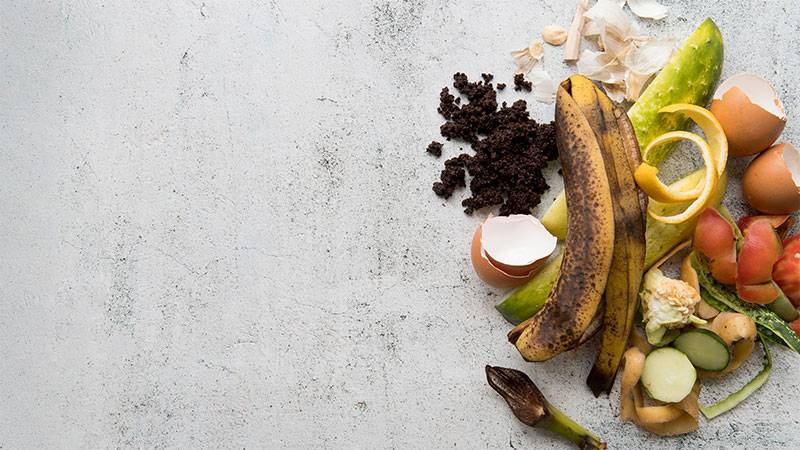
Start by gathering all your kitchen waste. Bokashi composting is unique because it can process almost all types of organic waste, including meat and dairy, which are typically not recommended for traditional composting methods.
Step 2: Adding Waste to the Bin
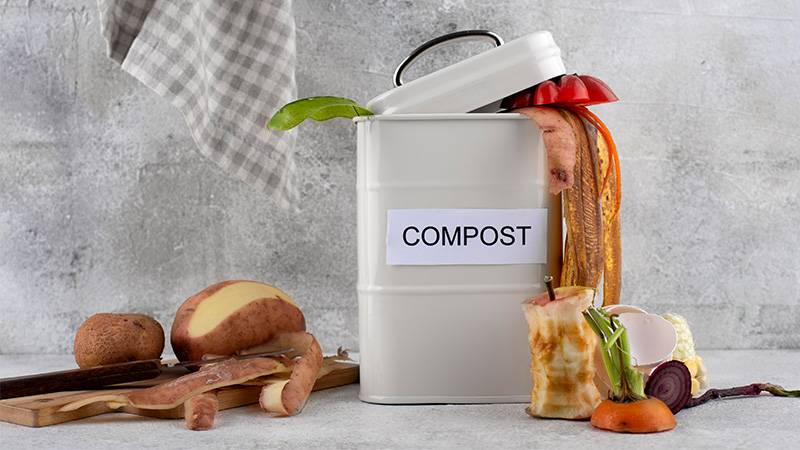
Open your Bokashi bin and add the collected kitchen scraps. It’s best to cut larger pieces into smaller chunks to speed up the fermentation process. However, avoid adding liquids, as they can disrupt the balance needed for effective composting.
Step 3: Sprinkling Bokashi Bran
After adding your waste, sprinkle a generous layer of Bokashi bran over the top. This bran contains effective microorganisms (EM) essential for breaking down the waste anaerobically. Ensure every layer of waste is covered to prevent the growth of unwanted bacteria and odors.
Step 4: Sealing and Compressing
Press down the waste to remove any air pockets, which can inhibit the fermentation process. Then, seal the bin tightly. A properly sealed bin maintains an anaerobic environment, crucial for successful Bokashi composting.
Step 5: Draining Leachate Regularly
Remember to drain the leachate from your bin every other day. This liquid, rich in nutrients, can be diluted with water (1:100 ratio) and used as a plant fertilizer. Regular draining also helps to maintain the right environment inside the bin for the microorganisms to work efficiently.
From Bin to Soil: Completing the Composting Cycle
Completing the composting cycle with Bokashi is a rewarding step towards enhancing your garden’s soil health and biodiversity. Knowing when your Bokashi bin is ready to be emptied is straightforward. Typically, the bin is full and ready after two to four weeks, indicated by a slight pickled smell and a white mold, a sign of successful fermentation, not spoilage.
Transitioning Fermented Waste to Soil
Once your bin is ready, it’s time to transition the fermented waste into the soil. This can be done in two main ways:
1. Burying Directly in the Garden
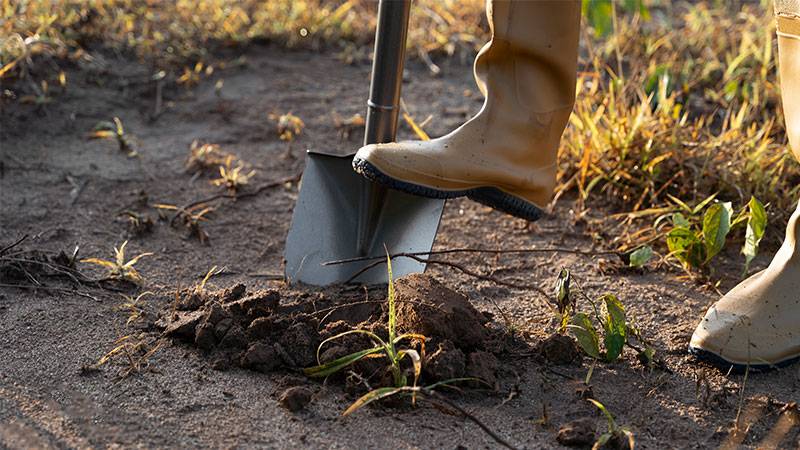
Dig a trench about 12 inches deep in your garden or planter and empty the contents of the bin into it. Cover the waste with soil. The high nutrient content immediately starts to benefit soil health, improving fertility and structure. Within two to four weeks, the waste will be fully integrated into the soil, ready to nourish your plants.
2. Adding to an Outdoor Compost Pile
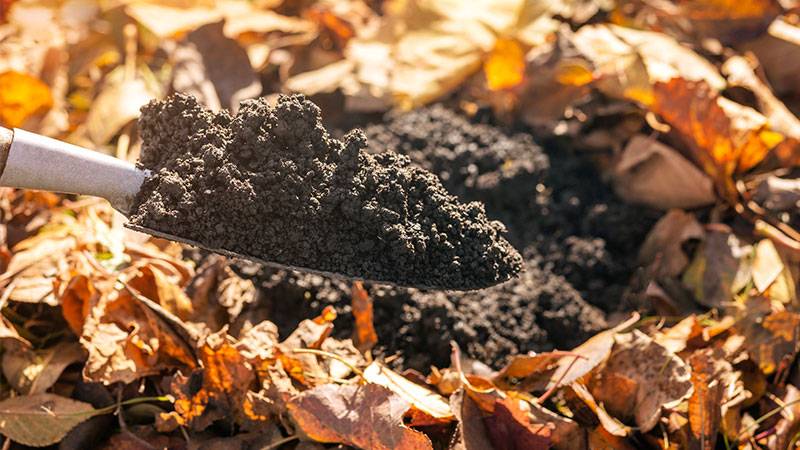
If you prefer, you can add the Bokashi pre-compost to an existing compost pile. This method speeds up the composting process of the pile due to the effective microorganisms from the Bokashi bran. It enriches the pile, introducing beneficial bacteria and accelerating decomposition.
Benefits for Soil Health
Incorporating Bokashi fermented waste into your garden significantly enhances soil health. It increases the soil’s nutrient content, improves moisture retention, and encourages the presence of beneficial microorganisms. These changes result in healthier plant growth, increased yield, and a more resilient garden ecosystem.
By completing the Bokashi composting cycle, you’re not only managing organic waste efficiently but also contributing to environmental sustainability and the enrichment of your garden’s soil, making it a win-win for eco-conscious gardeners.
Troubleshooting Common Bokashi Composting Problems
Even the most eco-conscious gardeners can encounter hiccups with Bokashi composting. Here’s how to troubleshoot common issues:
Bad Smells
An unpleasant odor is a sign that the fermentation process might not be proceeding correctly. This can happen if the bin isn’t sealed properly or there’s too much liquid in the mix. Ensure the bin’s lid is tightly closed after every addition and sprinkle a little extra Bokashi bran if odors persist. Regularly draining the leachate helps prevent anaerobic conditions that cause foul smells.
Mold Growth
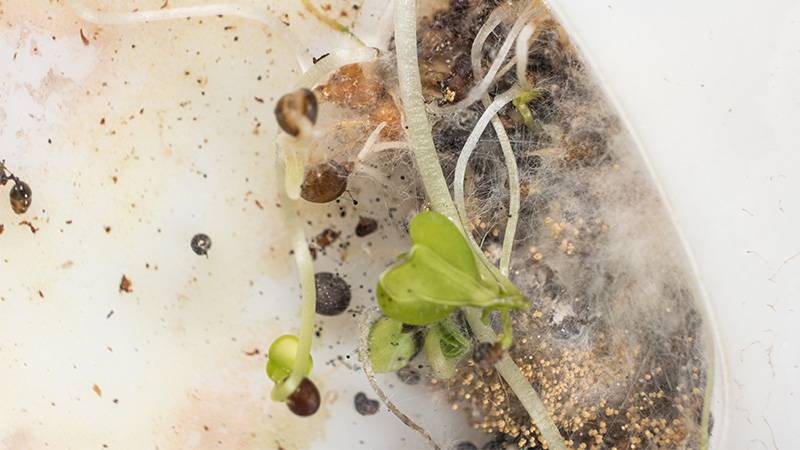
White mold is a normal part of the Bokashi process, indicating healthy fermentation. However, if you notice green or black mold, this suggests contamination. To avoid this, always cover your waste completely with Bokashi bran and ensure the bin is sealed to maintain an anaerobic environment. If mold occurs, remove the affected parts before burying the compost in the soil.
Ineffective Fermentation
If the waste doesn’t seem to be fermenting, it might not have enough Bokashi bran. Ensure each layer of waste is adequately covered to introduce enough effective microorganisms (EM) for the process. Cutting larger pieces of waste into smaller chunks can also enhance fermentation efficiency.
Advanced Bokashi Tips and Tricks
Diving deeper into the world of Bokashi composting reveals a treasure trove of advanced tips and tricks to elevate your green living practices. Beyond the basics, here’s how to maximize the benefits of your Bokashi compost and leachate:
Boosting Plant Health with Bokashi Leachate
Diluted Bokashi leachate is a potent liquid fertilizer, rich in nutrients. For an invigorating plant boost, dilute the leachate further than the standard 1:100 ratio for sensitive plants, ensuring a gentle yet effective nourishment. This application promotes robust plant growth and increased resilience against pests and diseases.
Enriching Potting Mixes
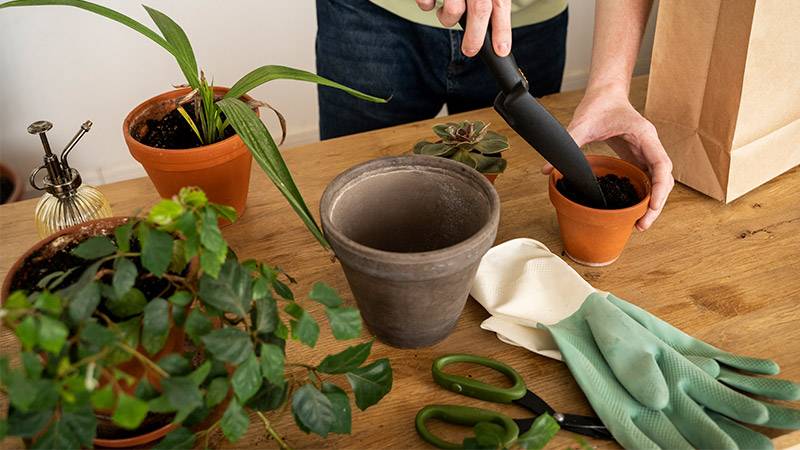
Incorporate finished Bokashi compost into your potting mixes to enhance soil fertility and structure. This not only improves moisture retention but also introduces beneficial microorganisms, creating a vibrant ecosystem within your pots that supports healthier plant growth.
Creating a Soil Amendment
Mix Bokashi compost with traditional compost and other organic materials like leaf mold to create a premium soil amendment. This mix can significantly improve soil biodiversity, enhancing garden health and productivity.
Accelerating Compost Piles
Add your Bokashi pre-compost to outdoor backyard compost piles to introduce effective microorganisms, speeding up the decomposition process. This synergy not only enriches the compost with a wider range of nutrients but also makes it ready for use in your garden sooner.
Why Bokashi Composting?
Why opt for Bokashi composting over traditional methods? The answer lies in its unique advantages that cater to a modern, eco-conscious lifestyle.
Speed and Efficiency
Bokashi composting stands out for its rapid fermentation process. Unlike traditional composting, which can take months to break down organic matter, Bokashi can transform your kitchen waste into pre-compost in just a few weeks. This efficiency means you can contribute to soil health improvement more frequently and see the benefits in your garden sooner.
Dairy and Meat Composting

One of the most significant benefits of Bokashi composting is its ability to process dairy and meat. These items are typically not recommended for traditional compost piles due to the risk of attracting pests and generating unpleasant odors. However, the anaerobic fermentation process in Bokashi composting safely breaks down these materials, making it a more versatile composting solution.
Minimal Odor
Thanks to the effective microorganisms (EM) used in Bokashi bran, the composting process is virtually odor-free. This contrasts sharply with traditional composting, which can sometimes emit strong odors as organic matter decomposes aerobically. Bokashi composting’s minimal odor makes it ideal for indoor use, even in small spaces.
The Impact of Bokashi Composting on Your Garden
The transformative effect of Bokashi composting on your garden is both profound and wide-reaching. By integrating Bokashi into your gardening practices, you’re not just disposing of waste efficiently; you’re actively enhancing your garden’s vitality.
Soil Fertility
Bokashi compost significantly improves soil fertility. The fermented material introduces a rich mix of nutrients, enzymes, and beneficial microorganisms into the garden soil. These components work together to enrich the soil, making it more fertile and better able to retain moisture and nutrients. This enriched soil foundation supports stronger, healthier plant growth.
Plant Health
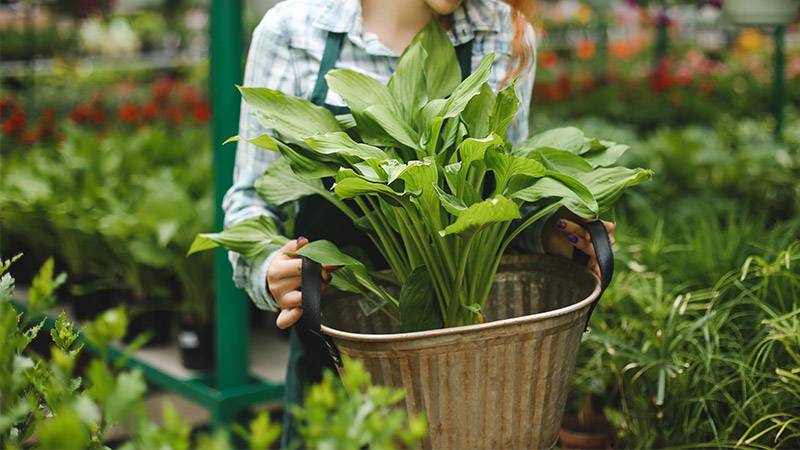
Plants in gardens treated with Bokashi compost exhibit remarkable vigor. The nutrients and beneficial microorganisms from the compost help plants develop stronger root systems, making them more resilient against diseases and pests. Anecdotal evidence from seasoned gardeners frequently highlights how plants in Bokashi-treated soil outperform those in untreated plots, with visible improvements in both growth rates and yields.
Garden Biodiversity
Bokashi composting contributes to an increase in garden biodiversity. The enriched soil creates a hospitable environment for a variety of life forms, from earthworms to beneficial insects. This diversity plays a crucial role in maintaining a healthy ecosystem, aiding in natural pest control and pollination.
Understanding the Science Behind Bokashi
At the heart of Bokashi composting lies a fascinating science that sets it apart from traditional composting methods. Understanding this can enhance your appreciation and execution of the process.
The Fermentation Process
Bokashi composting utilizes an anaerobic (without oxygen) fermentation process, driven by effective microorganisms (EM) present in the Bokashi bran. These microorganisms break down organic waste, including hard-to-compost items like meat and dairy, without the need for oxygen. This process significantly reduces the time it takes to turn waste into a soil amendment.
Role of Effective Microorganisms (EM)
The EM in Bokashi bran are a mixture of beneficial bacteria, yeasts, and fungi that work together to ferment the waste. These microorganisms produce substances like enzymes and organic acids during fermentation, which suppress harmful pathogens and accelerate decomposition. The presence of EM ensures that the process is odor-free and produces a nutrient-rich end product that is beneficial for soil health.
Biochemical Differences from Traditional Composting
Unlike traditional composting, which relies on aerobic decomposition and can take several months, Bokashi composting quickly ferments waste in just a few weeks. Aerobic composting breaks down waste through the action of air-breathing microorganisms, generating heat and sometimes odors. In contrast, Bokashi’s anaerobic process does not generate heat and preserves more nutrients in the waste, making the final compost more nutrient-dense.
Conclusion
Embracing Bokashi composting is more than just a step towards reducing kitchen waste; it’s a journey into sustainable living. Its simplicity, coupled with the profound environmental benefits, makes Bokashi an ideal choice for anyone looking to make a positive impact.
By integrating this method into your daily routine, you not only enrich your garden but also contribute to a healthier planet.
I encourage you to start your Bokashi composting adventure today. Share your experiences, spread the word, and inspire others to join this eco-conscious movement. Together, let’s cultivate a greener, more sustainable world.



